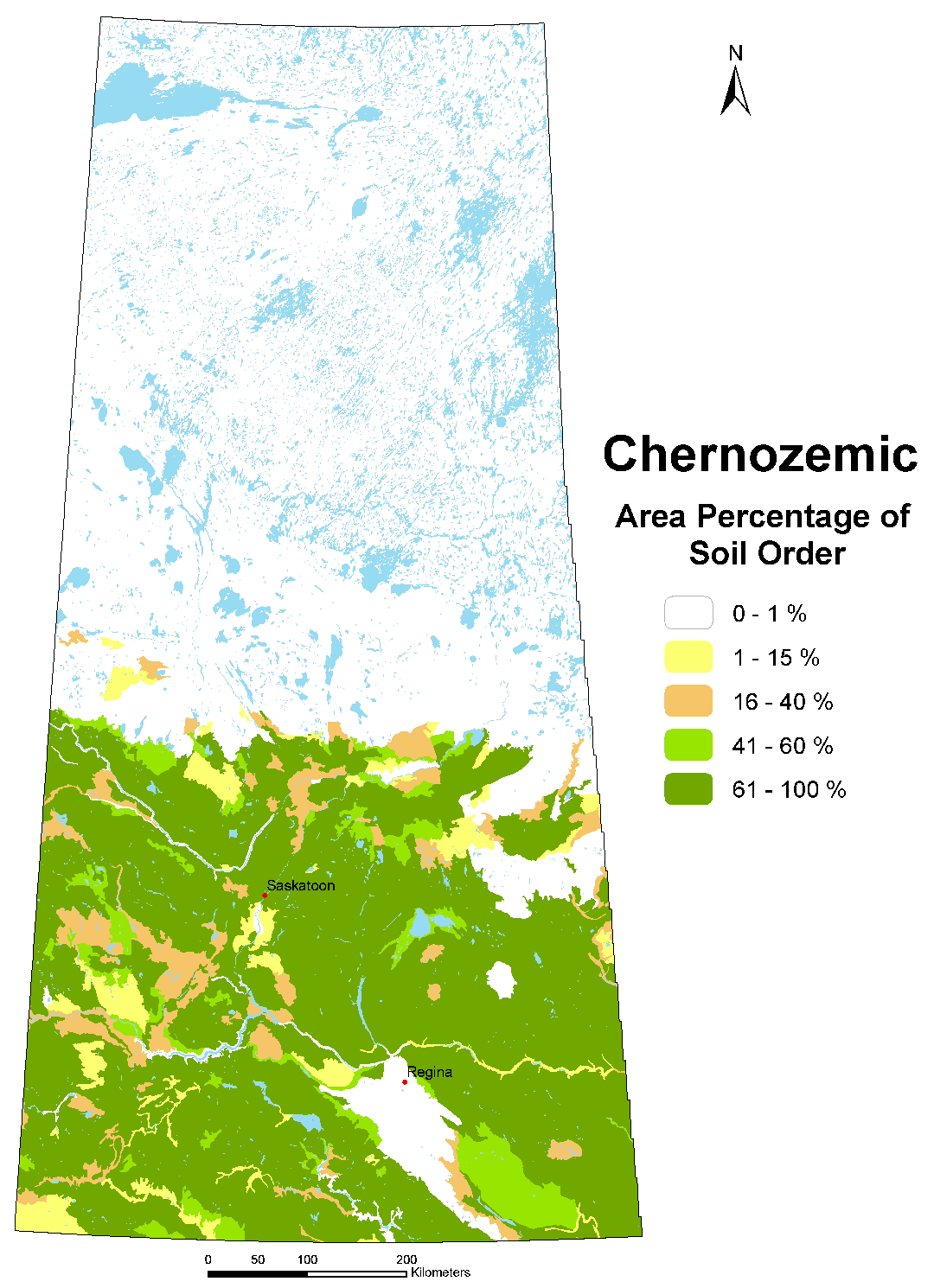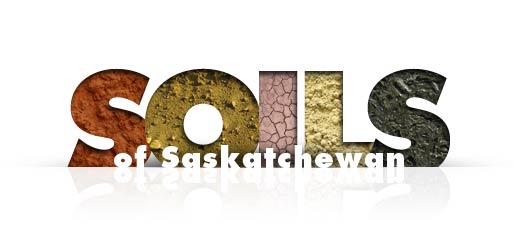Great Groups of the Chernozemic Order:
The four great groups of the Chernozemic Order are based on the surface colour: Brown, Dark Brown, Black, and Dark Grey. The surface colour reflects the soil organic matter (SOM) content of the soil – the greater the organic matter, the darker the surface colour. The Great Groups of the Chernozemic Order also define the well-known Soil Zones of the agricultural area of Saskatchewan.
Brown Chernozemic Soils:
Soils of the Brown Great Group occur primarily in the semi-arid Mixed Grassland Ecoregion of southwestern Saskatchewan where the moisture deficit is highest in the Province. SOM contents of cultivated soils are typically 2.5 to 3.5%.
Dark Brown Chernozemic Soils
Dark Brown Chernozemic soils are associated with the Moist Mixed Grassland Ecoregion, which is cooler and somewhat wetter than the Mixed Grassland Ecoregion. The higher soil moisture levels result in higher SOM contents (typically 3.5 to 4.5 % in cultivated soils), darker soil surface colours, and a greater thickness of soil development.
Black Chernozemic Soils
Black Chernozemic soils developed in the Aspen Parkland Ecoregion – a complex mosaic of Aspen groves separated by expanses of grasslands. The cooler, marginally wetter conditions resulted in high SOM contents (typically 4.5 to 5.5%) and black soil surface colours. The most fertile Black Chernozemic soils have SOM contents in the 8 to 10% range.
Dark Gray Chernozemic Soils
This great group is found in the Boreal Transition Ecoregion where trees were more dominant in the natural vegetation. The surface soil colours reflect the influence of both below-ground grass SOM inputs and forest soil-forming processes and often have a “salt and pepper” appearance. SOM levels decrease from the Black soils, typically to 3.5 to 4.5% in cultivated soils.

